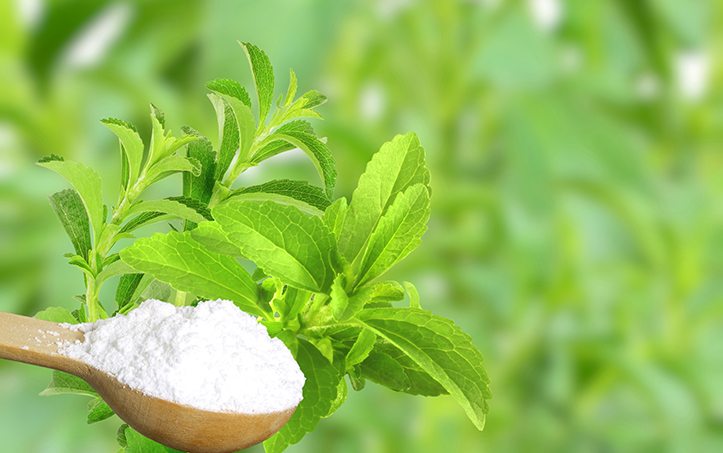Project Description

In some areas, such as South America, it has been grown, harvested and used as a sweetener for two centuries. Today, stevia is known as the “sugar of the millennium” and it is an approved, natural sweetener which is used in foodstuffs and beverages to give a sweet taste – and for other reasons as well.
Sweet… by nature: The stevia plant (stevia Rebaudiana Bertoni) belongs to the Asteraceae family, which includes plants and flowers such as daisies, chrysanthemums and sunflowers. “Steviol glycoside” is the sweetener which is derived from the leaves of the stevia plant and is 250-300 times sweeter than sugar, something that means it can be used in small quantities, which in turn means that it does not lead to dental decay.
Taste, no calories: The sweetener derived from the stevia plant is not metabolised by the human body and thus does not provide it with any calories. This is why, when we use stevia to replace sugar in food, desserts and beverages, we reduce our calorie intake without this having any negative effect on the taste of our food. So, as part of a balanced diet, foods such as Sweet & Balance desserts which contain a naturally-occurring sweetener from the Stevia plant can help us to regulate our body weight more successfully.
With the “official seal” of the specialists: Before any non-nutritive sweetener can be used for human consumption, it is subject to strict controls by global organisations which are responsible for food safety issues. Through this process, the sweetener from the stevia plant has, in accordance with the results of scientific research, been recognised as an absolutely safe ingredient by global and European-wide bodies such as the American Food and Drug Administration (FDA), the Joint Committee of the Food and Agriculture Organization of the United Nations and the World Health Organization for Food Additives (JECFA) and the European Food Safety Authority (EFSA). In addition, its safety is confirmed by its long history of use in countries such as Japan and Paraguay.
An “ally” for diabetics: Sweeteners from the stevia plant allow people with diabetes to integrate sweet-tasting foods into their lives as stevia-based sweeteners do not affect blood sugar levels. In fact, clinical studies indicate that the consumption of steviol glycosides contributes to better glycemic control than sugar.
As part of your “first aid kit”: For centuries, the Paraguayan Guarani tribe used stevia not only as a sweetener but also as a medicine to cure heartburn and other illnesses. And even today stevia is still being found to have medicinal properties as clinical investigations have shown that the systematic administration of a specific amount of steviol glycosides can lower blood pressure.
Stevia is a product that can be used as sugar substitute or used in combination with it and with other low-calorie sweeteners. And it is definitely here to stay and to give us a chance to enjoy sweet-tasting foods and drinks without feeling guilty!




